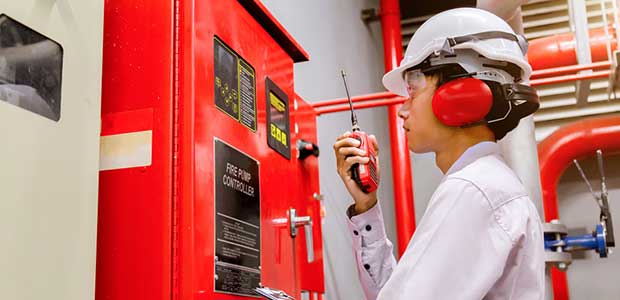
5 Life-Saving Fire Safety Features
Fire-safety measures can aid in a healthier work environment.
- By Devin Partida
- Apr 06, 2022
Thousands of fires occur in American homes and businesses each year. Since individuals developed more efficient safety measures, the fatality rate from fires declined. Companies want to eliminate burns and other injuries on-site by establishing strict safety codes.
The Occupational Safety and Health Administration (OSHA) developed a list of fire prevention measures. Individuals may apply the prevention features to their workplaces and minimize death and injuries. A company’s fire safety measures must abide by OSHA’s federal General Duty Clause, which ensures healthy work environments.
What Is the General Duty Clause?
OSHA developed the General Duty Clause to hold company owners responsible for their employees’ health. The law requires employers to remove hazards from the workplace. Owners must address all workplace hazards pertaining to their buildings, equipment, machines, and other systems.
Part of the clause also pertains to fires in the workplace. OSHA holds business owners responsible for developing a fire prevention plan. They must list all potential fire hazards in the document and define their adequate storage methods. The document should also identify where extinguishers are and how to use them.
Company owners can also protect their employees from injuries and death in manufacturing facilities and offices by developing a fire evacuation plan.
- Create a Written Fire Evacuation Plan
Developing an accessible and reliable evacuation plan can protect employees’ health and well-being. Each year, nearly 3,340 fires occur in commercial buildings. About four deaths and 44 injuries derive from workplace fires.
Creating and displaying written evacuation plans can prevent future harm. In industrial facilities, there are multiple exit doors. Company owners may hire evacuation professionals to predict common causes of fires and produce specific evacuation routes.
Professionals should display evacuation maps throughout commercial buildings, highlighting efficient and safe exit routes. They can also display written instructions beneath the image in multiple languages to accommodate all employees. Effective evacuation plans may prevent injuries, property damage, and emotional trauma.
- Install a Reliable Fire Alarm System
Business owners can also enhance fire prevention measures by installing advanced fire alarm systems. Alarm panels can monitor and detect ignition signs to alert professionals. Advanced systems include interactive graphic display (IGD) tablets.
The IGD tablets highlight fire-related data quickly. It also displays facility floor maps and zooms into the region setting off the alarm. The system achieves 100% accuracy in point location.
Advanced systems can also detect hazardous materials within a commercial building. They additionally highlight accessible exit routes during fires to minimize employee confusion and injuries. Replacing outdated fire alarm systems with digital alternatives can effectively prevent fires.
- Develop a Comprehensive Fire Prevention Training Program
Employers may also prevent fires and related injuries by developing comprehensive training programs. The program may help employees identify, report, and control fire hazards. It also trains workers to properly store flammable materials and equipment.
Individuals must additionally receive appropriate training. Program leaders may have employees practice using fire extinguishers, hoses, and other emergency response materials. They can also develop specific fire prevention training for heavy machinery and equipment operators.
- Install Fire Systems on Heavy Machinery and Equipment
Many industrial facilities use forklifts, excavators, and other heavy machines to move large materials. Engineers developed fire systems specifically for portable machines and equipment, which alert operators of hazards. Employers may hire professionals to install the systems on their heavy machines to minimize ignition risks and injuries.
Individuals can also install portable extinguishers on their moving machines. Operators may study where professionals place the nearest fire suppression equipment. Employees can additionally perform fire prevention maintenance on the heavy machinery and equipment in their workplaces.
Frequently cleaning a device’s engine and internal components can reduce debris-related fires. Adequate maintenance practices may also prevent oil and grease buildup. When internal machinery components overheat, they may cause oil and grease to ignite.
- Utilize Flame Retardants
Individuals may also apply flame retardants to flammable materials. Upholstered furniture, rugs, insulation, curtains, and other building features can exacerbate fires. Business owners can protect themselves and employees from harm by adding flame-suppressant materials to office spaces.
The most accessible flame retardant is bromine. Individuals can purchase products with bromine or add the element to buildings and reduce flammability. Business owners can hire professionals to apply flame-retardant spray throughout their facilities.
Individuals must apply the spray in well-ventilated areas. They should also wear protective equipment when using bromine sprays. When professionals effectively apply flame retardants, they may access economic, environmental, and human health benefits.
Benefits of Fire Safety Measures
Minimizing workplace injuries is essential. Employers can maintain efficient workforces by protecting their employees’ health and well-being. Improving fire safety measures may also make workers feel safe and comfortable, increasing their morale.